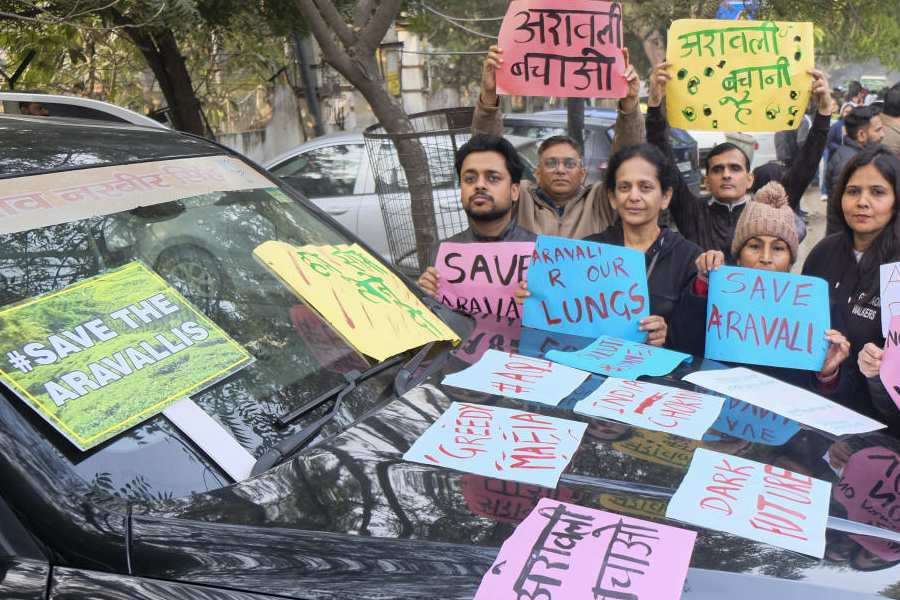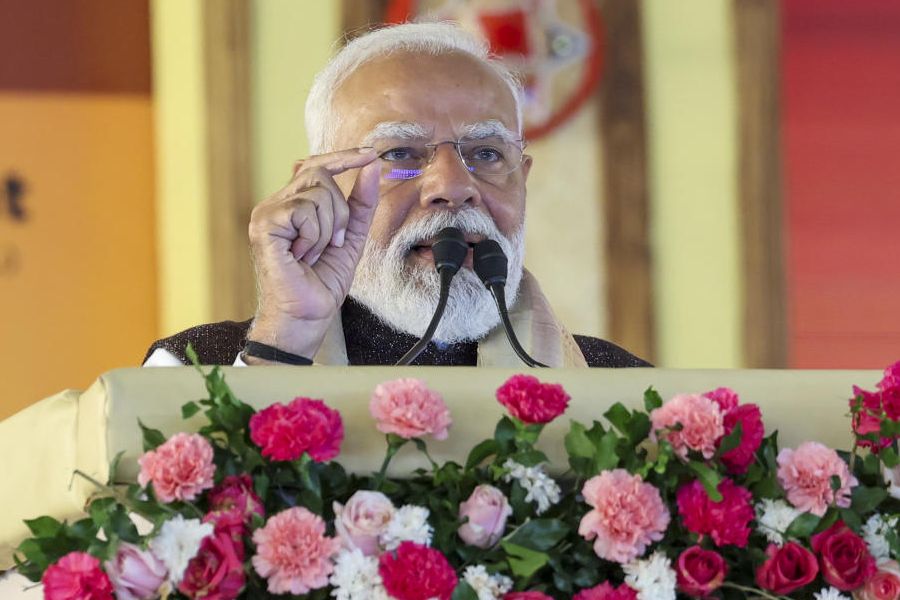 |
Amol Bhave was bored with his nondescript school at Jabalpur, Madhya Pradesh. Then one day, the Class X student, while idly surfing the Internet, came across a repository of online video lectures from a classroom at the Massachusetts Institute of Technology (MIT) in the US.
To explain the science of oscillation, Bhave saw that a professor was hanging on to a pendulum. The period of oscillation, the teacher went on to prove, was independent of the mass of the bob.
“It was so funny, but it gave me a feel of the real thing,” the 17-year-old student recalls about the incident two years ago. He went on to enrol at EdX, an online platform for interactive study on the web, provided by MIT, Harvard, the University of Los Angeles at Berkeley and a few other top flight universities.
Bhave scored 97 per cent marks in EdX’s circuits and electronics course. And last month, he was accepted at MIT as a full-time student.
Free online courses, also called Massive Open Online Courses or Moocs, are catching on. And while they are a boon for students, educationists are looking at them with some trepidation. Will they replace physical campuses one day?
“Moocs will eventually make a physical campus redundant in higher education,” says M.J. Xavier, director, Indian Institute of Management (IIM), Ranchi.
The courses, which came into being in 2008, look set to revolutionise education as more and more universities get into the act and students log on from across the world. British universities too are poised to launch online education this autumn. Futurelearn, the new UK online educational platform, backed by the Open University, will provide online education with its partner universities.
Indian students, in particular, have been joining Moocs in large numbers.
“Students from India comprise about 13 per cent of current enrolments in EdX. We get the second most visits from India (after the US),” reveals Ananth Agarwal, MIT professor and one of the founders of EdX.
Another online course platform — Coursera — gets the most Indian students from Bangalore, followed by New Delhi, Mumbai, Hyderabad, Chennai and Pune, says Andrew Ng, Coursera co-founder and Stanford University professor. “Online courses are the way to go,” Bhave maintains. “All you need is a laptop and an Internet connection. You can attend lectures at top universities and also interact with the world’s best professors.”
Last year Coursera tied up with 66 leading universities in the world to offer thousands of courses for free. “We hope to give everyone access to world-class education that has so far been available to only a select few,” says Ng. As many as 3,148,016 users (8.8 per cent of the total volume) were from India.
The benefits are evident. “Students who cannot get into the top universities can at least have free access to good online courses,” says Gautam Shroff, a chief scientist at Tata Consultancy Services (TCS) and an adjunct faculty member at the Indian Institute of Technology (IIT), Delhi. “Those who do well will be highly valued in the job market,” adds Shroff, who taught a 10-week course on “web intelligence and big data” on Coursera. Take Anil Kumar, a business consultant who works at an information technology company in Bangalore. An engineer from Manipal University and an MBA from IIM, Bangalore, he joined Coursera’s sociology courses offered by Princeton University and the University of Pennsylvania.
“The peer evaluation of the assignment worked so well that I learned a lot by reading the answers of other students from across the world,” he says. “The variety of courses helps me gain new skills and remain a step ahead of others.”
Employers are already taking Moocs certifications seriously, says Shroff. “It’s a boon for working professionals since these enable them to close gaps in their expertise without having to attend a physical course,” he adds.
Ng stresses that Coursera helps students land jobs and get into degree programmes. Moocs offer certificates and even transferable credits (granting credits to a student for educational experiences or courses undertaken at another institute) by charging a small fee.
But some experts question the benefits of Moocs. “These courses are still too new to be considered an additional qualification,” stresses T.V. Mohandas Pai, former head of human resources at Infosys. E. Balaji, head of recruitment firm Randstad India, agrees. “Some multinational companies may give weightage to such online education, but Indian companies still prefer people qualified through full-time courses.”
For scores of Indian students, however, Moocs is the new platform for education. Take Jit Ray Chowdhury, who learnt artificial intelligence and eventually created a self-driven car based on skills picked up from free online classes at Udacity, spun out of Stanford University. “Conventional education is biased towards exams and interviews, which are of little use in the practical field where technology changes rapidly,” says the MTech from IIT-Kharagpur, who recently got an offer from the robotics institute at Carnegie Mellon University for a research project.
The courses certainly help Indian students of technology and management, testifying perhaps to the lacunae in the institutions that have mushroomed across India. Says Aswith Rego, EdX student, “I didn’t study at an IIT and I really don’t think I became an engineer when I received an engineering degree. I’ve become a lot more efficient at circuit design after doing an EdX course.”
Top Indian institutions are now waking up to the challenge of Moocs. The human resource development ministry set up a video-based curriculum on the web called the National Programme on Technology Enhanced Learning (NPTEL) in 2012. But students who have experienced Moocs say NPTEL is not a patch on the foreign open courses.
Carried out by seven IITs and Indian Institute of Science, Bangalore, over 100 courses under NPTEL are also accessible on YouTube. “These courses may not be interactive like Moocs, but are quite comprehensive,” says former IIT, Kharagpur teacher Tapan K. Basu, one of the architects of the courses. Basu adds that the courses receive millions of hits from Africa, southeast Asia and even Europe and are used for supplementary education in Indian tech schools.
The IIMs have also launched open courses. “The site was set up on an experimental basis,” concedes Shankar Venkatagiri, an assistant professor at IIM, Bangalore. “It is intended as a publication of our course materials on the web, and not for an interactive experience with faculty members. It’s rather static compared to Moocs.”
At IIM, Ranchi, the Learning Management System instructs students through videos, allows them to conduct online chats with teachers and classmates and get themselves assessed. “As networked learning is now a worldwide phenomenon, it is time to move this way,” says Xavier of IIM, Ranchi.
Indeed, many believe that online education will increasingly take a share of the market. This has been happening in world media, with online news taking precedence over traditional media forms, points out Ajit Balakrishnan, founder-chairman and chief executive of Rediff.com, who participated in a US-based online course in creative writing.
Balakrishnan, who is also the chairman of the board of governors of IIM, Calcutta, says 4,000 students took online classes at the B-school, as against 600 students on the campus in 2012-2013. Its online revenue is already 20 per cent of the annual revenue. Not having to physically gather students at one place and non-print teaching materials bring down the cost of education substantially, he adds. “Rapid changes in technology and the desire to re-educate oneself have created greater demand for online education.”
So is conventional education all set to disappear? Some observers argue that it will. Sir Michael Barber, chief adviser at Pearson, the education company, warned of a revolution in global higher education in a paper he co-wrote for the UK’s Institute for Public Policy Research think tank.
But not everybody is convinced. Mathai Joseph, former executive director and R&D head of TCS, maintains that 90 per cent of students who register with Moocs do not complete the courses. “Figures from Coursera, Udacity and EdX bear this out,” he says. Besides, as most courses are in English — often in a typical American accent— not all Indians can comprehend the lectures.
Radhika Ghoshal, a 15-year-old EdX student from New Delhi, concurs. “Online courses lack an important aspect of education — real-time student-teacher interaction. Also, these are less suited for humanities, as answers for such subjects cannot be graded automatically.”
Still, Moocs are definitely here to stay. It is free, democratic and gives access to the best education in the world. “We need to create Indian Moocs, taking into account our students’ educational backgrounds and learning practices,” Joseph says.
Others would argue, why bother when the world is in one’s pocket?
Highs and lows
Coursera
Social enterprise with Stanford roots; 66 university partners
Courses: 197 in 18 subjects, including computer science, maths, business, social science, medicine, engineering
Pros: Huge range of courses; offers certificate and career matching services
Cons: Tough estimated weekly hours and deadlines; peer grading for exercises can gall
Udacity
For-profit, with Stanford roots but not affiliated to the university
Courses: 18, in computer science, mathematics, physics, business
Pros: Learning at one’s own pace
Cons: Limited range of courses, no subtitles or foreign language options
EdX
Nonprofit venture spun out of MIT and Harvard
Courses: 32, including chemistry, electronics, public health
Pros: Variety of courses; some courses have foreign language format; certificates available
Cons: Tough estimated weekly hours and deadlines











